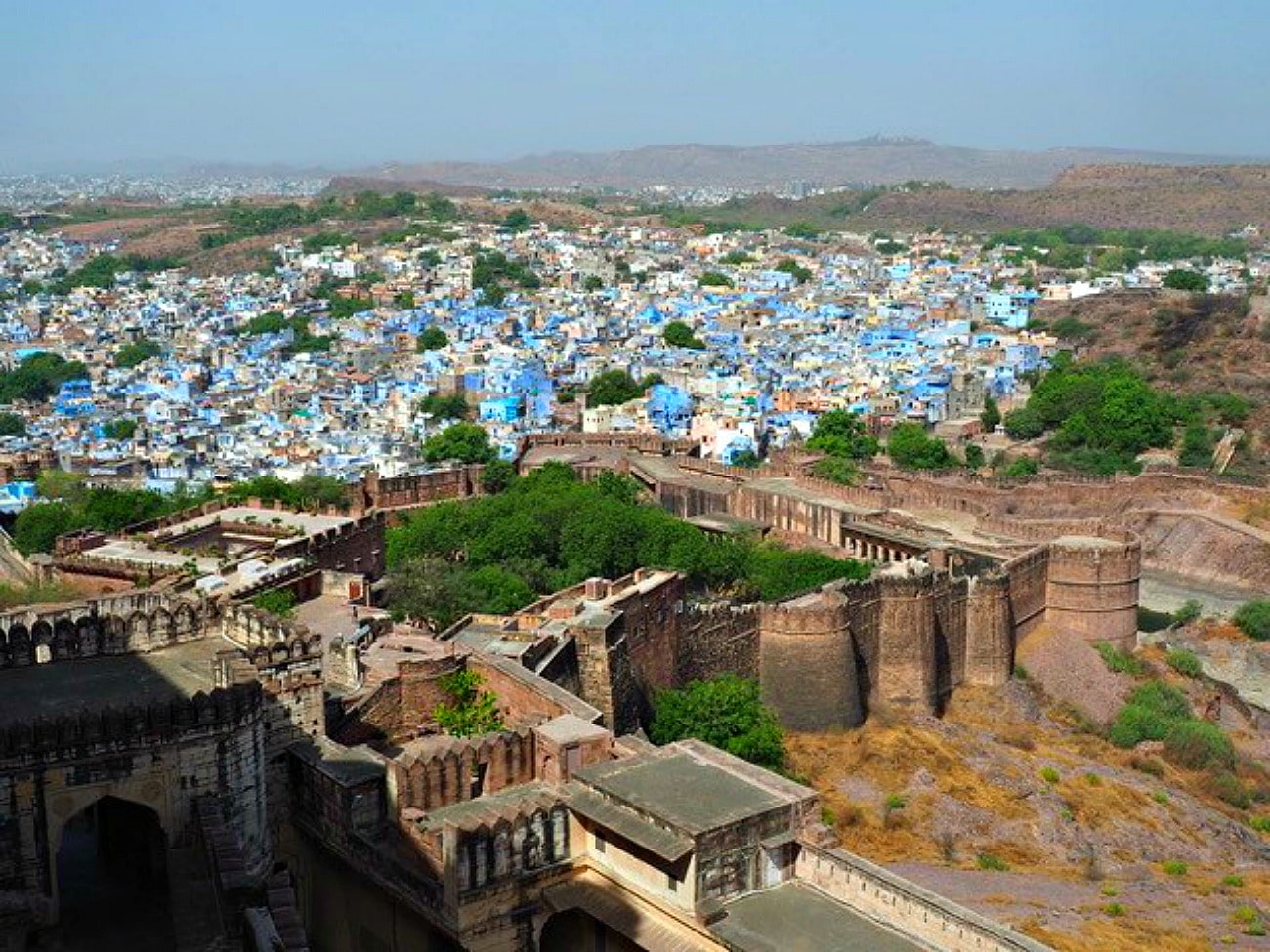Rajasthan is all about color: vibrant saris wrapped around women, towering turbans crowning men’s heads, markets bursting with colorful vegetables, fabric and jewelry. Even towns are associated with color – Jaipur, “the pink city” and Jodhpur, “the blue town.” Palaces, temples, forts, crafts, folk art, bustling cities, big cats, and a varied landscape – Rajasthan, India’s best loved region, has it all. Its legendary cities were built by mighty Rajput warriors. These warrior princes, when not fighting amongst themselves, constructed hundreds of forts, palaces, and temples, indulging their fondness for pomp and ceremony. Many of the sparkling palaces are now hotels offering luxurious accommodations.
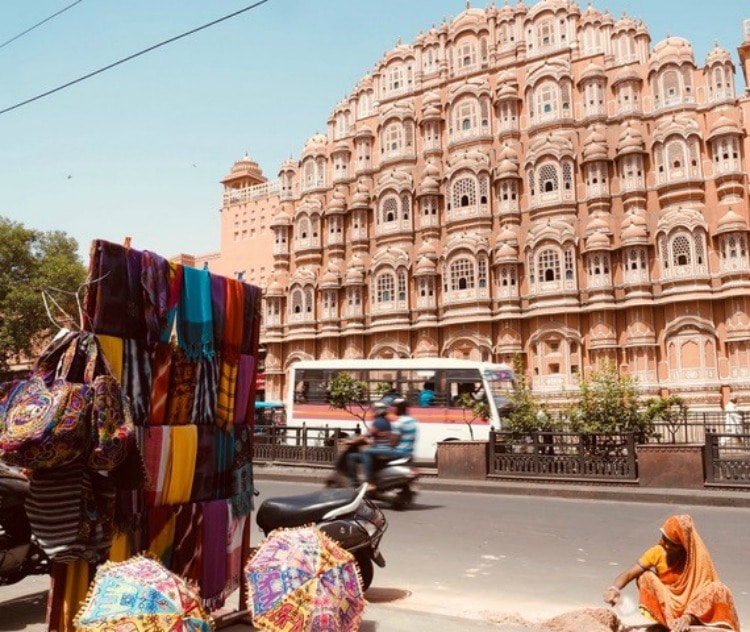
Off the Beaten Path
We were impressed with all the must-see sights, but even more so when we ventured off the beaten track. Jaipur, the pink city, is famed for its imposing Amber Fort and Palace, located several miles outside town, high on a hill, with ramparts, gates and cobbled paths. Its City Palace with courtyards, chambers and dazzling treasures is another astonishing sight.
We stayed at the Samode Haveli, a lavish palace still owned by maharajas and now a hotel whose manager conducts a “morning walk through the pink city.” Most guided tours offer nothing “out of the box,” he said. We left the hotel at 6 a.m. and followed him to places not on the tourist circuit. We visited the market, stopped for special street food tastings, and learned about garbage collection, street sweepers, religion and more.
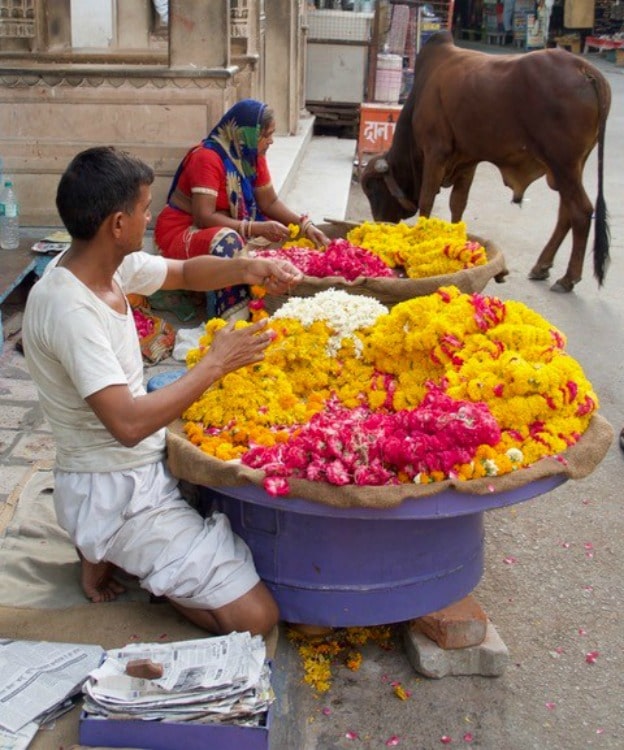
Hindis believe that all living things are gods and cannot be killed. As an animal lover, I was intrigued with the sacred, ubiquitous cows, stray dogs and monkeys. The cows that wander freely everywhere usually belong to someone, he said. The owners tie up the calves and let the mothers roam, knowing they will come back to their babies. The dogs, he said, usually have homes of a sort too. “Everyone makes so much food, so they give leftovers to the dogs.” They wander, return and “guard the house.” But beware of monkeys. We noticed a group of these rascals on our walk. “That one is especially bad,” he said, pointing to the dominant male. “He sends his troops out to scout houses and when the coast is clear, they return and raid the place. They know how to open refrigerators and are very intelligent.”
We visited Rajasthan in May when temperatures reach 45 C° (113 F°) and even above. All sightseeing was done in the early morning or late afternoon when it was cooler. It was still very hot but exploring at these times had one huge advantage – no crowds.
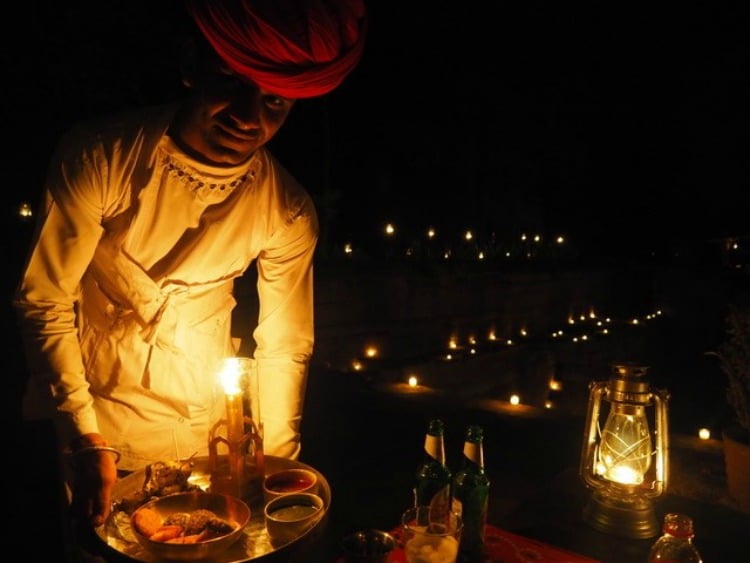
Village of Narlai
The idyllic “holy” village of Narlai sits at the base of a towering rock hill topped with a colossal elephant statue. We, and an Indian family, were the only guests at Rawla, an ancient hunting manor that originally belonged to the King of Jodhpur and served as a retreat for the royal family.
Part of our visit included dinner at a step well in the hills surrounding the village, “a surreal mesmerizing experience,” according to the resort literature. It was that and more. I was draped in shimmering scarves and a colorful turban was perched atop my husband’s head. We boarded an oxcart, sat regally on pillows, and set off along a bumpy dusty road. Soon it would be dark, but it was still light enough to admire distant mountains, lonely cows foraging for food and the occasional villager checking on his sheep. Step wells are just that – subterranean Indian architectural structures, accessed by a series of steps down to a pool of water. Our adventure led us to one from the 16th century.
Dinner at the edge of this magical place was good, but it was the ambiance that deserved the stars. Seven hundred oil lamps flickered around the deep hole and hypnotic sounds echoed from the eerie darkness. Costumed servers mysteriously appeared offering us all manner of delicacies on silver trays. It was all very touristy and not the kind of experience we typically like. But we were the only guests – just us, the servers, and a few musicians in the midst of this wild and weird setting. When there are more participants (almost always), more entertainment accompanies the spectacle. We had it all to ourselves, and it was indeed “mesmerizing.”
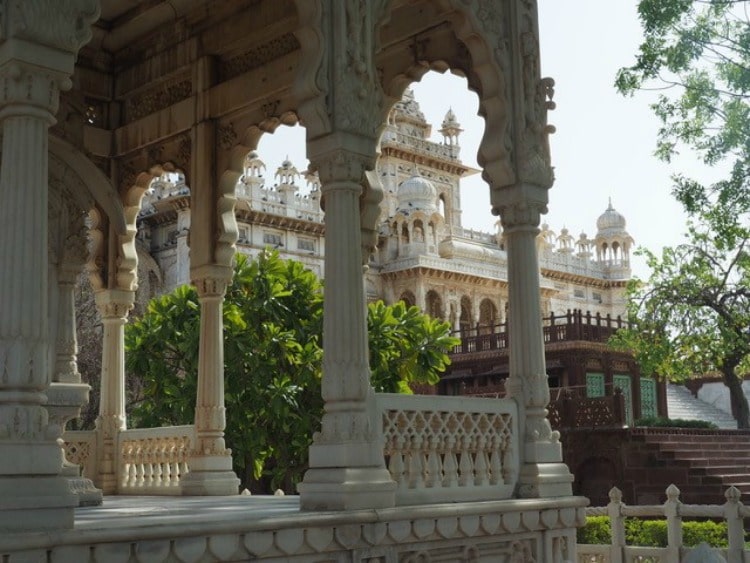
Bishnoi & The Narlai Hills
Again, no other tourists on our visit to a tiny enclave of Bishnoi, a tribe known for its love of wild animals. The tribal leader, a jovial character, showed us how he wraps 15 meters of cloth around his head to form his turban. He insisted we taste Bhang, a very potent brew which “can make you crazy.” Alcohol is supposedly forbidden, but “Lord Shiva likes Bhang so much we offer it to him,” – and have a healthy shot in the process.
But the highlight of our Rajasthan trip waited in the Narlai hills – the secretive and seldom-seen leopard. On a previous safari in Africa, then another in Sri Lanka, I had hoped for a sighting. No luck. The jeep bounced around the back country near our hotel, off roads into fields, through bush, stopping frequently to scour the landscape. A few peacocks. Antelope. Errant cows. Nary a leopard. I was more than a little disappointed, certain this was another failed mission. As we approached a range of rocky slopes, the vehicle came to a speedy halt. “There, up there, a leopard.” A leopard? Where? I had a hard time finding him. The spots and the beige coat blended right in with the background. The guide gave me his binoculars. Yes. There he was, magnificent Bhamsa, a 3-year-old male leopard lounging high on the rocks.
India rewarded us with not just one leopard, but two tigers. During the first stop on our Rajasthan tour, we visited the Ranthambore National Park, a vast wildlife reserve and home to 68 tigers. This time our driver spotted two tigers on the move.
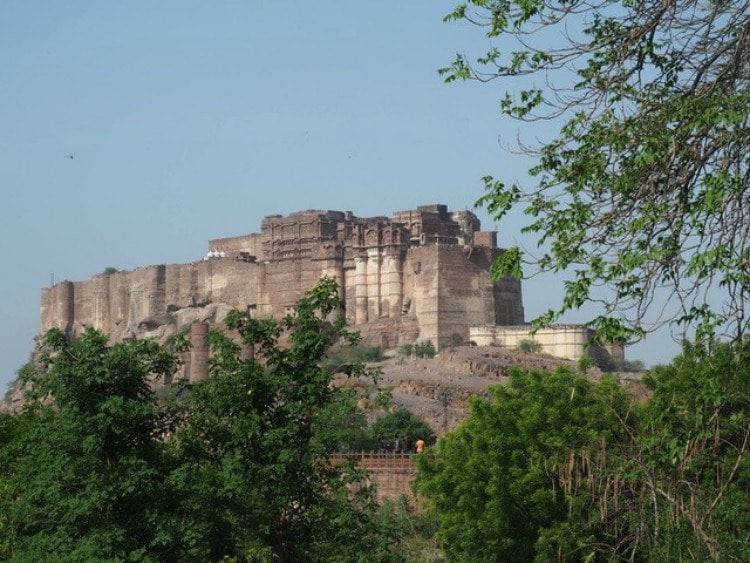
Jodhpur
Jodhpur, the blue town, claims “the most formidable fort in all of Rajasthan.” Its Majestic Fort, originally built in 1459, has been enlarged over the centuries by reigning maharajas. Inside are palaces and courtyards to explore, as well as a museum with the trappings of Indian royalty on display. From its hilltop perch, the view over the sea of blue buildings is breathtaking.
Jodhpur’s bazaar, like those in Rajasthan, is a riot of color, noise and people packed into narrow alleys. Women balance baskets on their heads. Motorcycles snake through the chaos. Crafty merchants try to lure you into their shops. We even spotted a man riding an elephant on the adjacent traffic-jammed main street.
Lakeside Udaipur is a jewel, as is its world-famous Lake Palace Hotel, a fantasy of white marble on Jagniwas Island. We took a boat to the island, wandered through courtyards and gardens, past lotus ponds, then splurged on dinner there. The return boat ride was pure romance with glittering lights on the gleaming water and the silhouettes of the City Palace’s towers and cupolas as a backdrop. This stunning palace has a museum with a collection of maharaja treasures: decorative arts, paintings, enamel and glasswork.
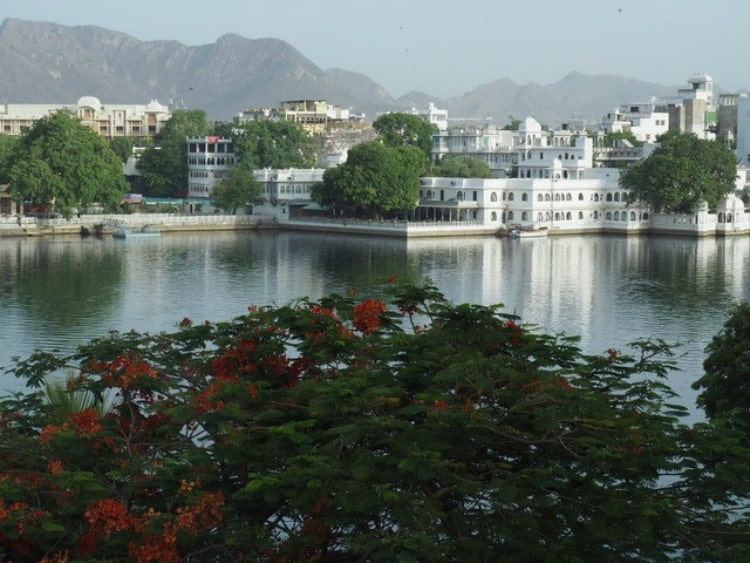
Bargain Hunting
Guides get a cut if they succeed in taking you to one of their buddies for bargains and you make a purchase. We told the Jodhpur guide we were not interested in buying anything. He persisted. He has a friend who has a warehouse full of exclusive merchandise sold to Bergdorf Goodman, Nieman Marcus etc. “Just have a look.” OK. Why not. It was a plot. The “friend” told us to sit and sip tea while he proceeded to unroll giant reams of gorgeous cashmere and pashmina. Naively, I thought this merchandise was all for wholesale purchase, certainly not retail like in a brick and mortar store. Of course not! I fell for the hype. Now I have a huge piece of pashmina, a souvenir of vibrant Rajasthan color. What I am going to do with it I still have not figured out.
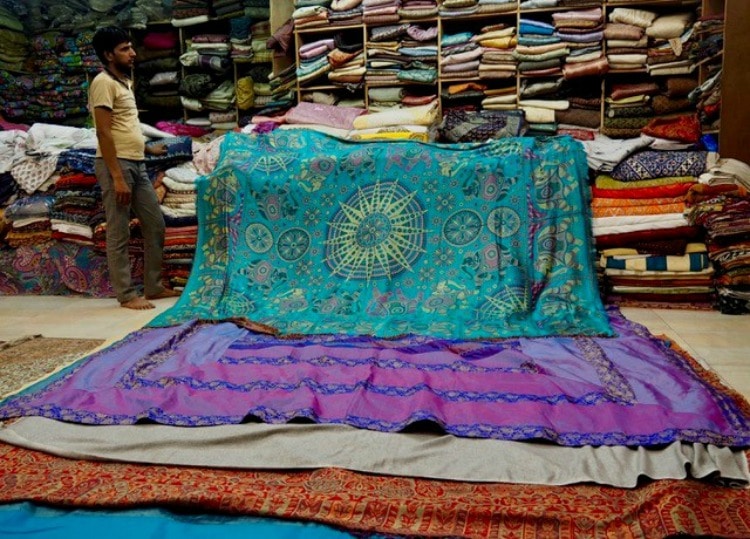
Postscript from the Author:
Our fascinating 11-day tour of Rajasthan with private driver and local guides was organized by Wild Frontiers. Accommodations in the gorgeous maharaja palace hotels were fabulous. www.wildfrontiers.co.uk

